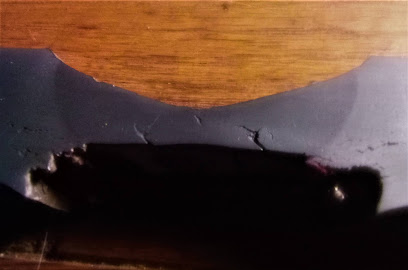Over the years a lot of experimental work I did was centered around high strain rate phenomena in solids. Which, there are probably more people attending your hometown high school football game than are interested in that field.
I have always had an interest in steel, its chemistry, its properties, and also its role in human history. Thus, my interest in knifemaking which embodies the art and craft of steel as well as the science.
In testing explosives a steel witness plate is often used to give a quick qualitative look at what the explosive output may have been. Often times it's more of a convenient way to rest the test item on a more stable surface. Over the years I must have used thousands of steel plates of various sizes and deformed them, punched holes in them and generally scattered them everywhere. I think I may have spent half a year out of my life just collecting them up afterwards. Needless to say I still have a few of them lying around.
I have already posted about the martensitic phase transformation that occurs during quenching of a knife blade in earlier posts. Another way to achieve a similar phase change in steel is through shock hardening. A shock wave is introduced into the steel through the contact of an explosive charge detonating on the steel. The resulting stress wave, if at high enough stress levels, transmitted in the steel induces the phase change. The resulting phase change left behind can be brought to light by polishing and etching a sectioned portion of the witness plate. The transformed material will show up darker in natural light and can be seen in the photograph.

.jpg)

No comments:
Post a Comment